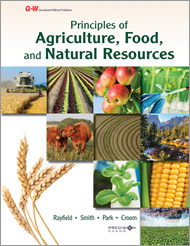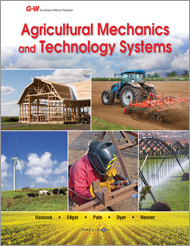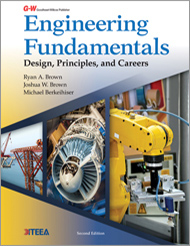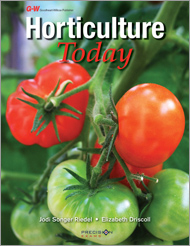Tennessee - Section B
Tennessee Educational ConsultantRequest a preview copyTitles Available with New Waiver Policy
Select the course title below to view textbook information.
View All
Agriscience

By: John S. Rayfield, Kasee L. Smith, Travis D. Park, and D. Barry Croom
Grade Level: 9-12
Correlation
Principles of Agriculture, Food, and Natural Resources
- Sample Student Login
Website: www.g-wonlinetextbooks.com
Username: agrisciencetn
Password: tnsectionb
- STEM Connections appear frequently within lessons and challenge learners to apply AFNR concepts more generally.
- Students can explore the various types of supervised agricultural experiences (SAEs) and the use of the Agricultural Experience Tracker (AET).
- The text provides practical information on building leadership, communication, and parliamentary procedure skills.
Foundations of Interior Design
Interior Design
- Sample Student Login
Website: www.g-wonlinetextbooks.com
Username: designtn
Password: tnsectionb
- Students learn the whys and hows of selecting interior materials, furnishings, and accessories.
- Differentiation is made between commercial and residential interiors.
- The preparation of visual communications, including drawings, renderings, and models, is included.
Principles of Agricultural Mechanics

By: J.P. Hancock, Don W. Edgar Ph.D., Michael L. Pate Ph.D., Lori A. Dyer, and W. Brian Hoover Ph.D.
Grade Level: 9-14
Correlation
Agricultural Mechanics and Technology Systems
- Sample Student Login
Website: www.g-wonlinetextbooks.com
Username: agmechanicstn
Password: tnsectionb
- The chapter Trends and Emerging Technologies introduces students to the many high-tech applications of agriculture and agricultural mechanics, including geographic information systems (GIS), telematics, sustainable energy sources, precision agriculture, wireless sensor networks, and the use of drones.
- A chapter on safety and extensive "Safety Notes" cultivate a safety-first mindset and drive home the point that safe work habits are needed in every domain of agricultural mechanics and technology.
- Reading and writing skills are developed by the careful definition and use of technical terms, by "Before You Read" guidance provided at the start of every chapter, and by "Communicating about Ag Mechanics" exercises at the end of every chapter.
- "Hands-on Agriculture" and "STEM and Academic Activities" provide engaging, inquiry-based learning activities for students and provide a bridge between theory and practice.
- To highlight safe, correct, and current practices, high-quality photographs and line art accompany text descriptions on nearly every page of the text.
Principles of Engineering and Technology
Engineering Fundamentals: Design, Principles, and Careers, 2nd Edition
- Sample Student Login
Website: www.g-wonlinetextbooks.com
Username: engineeringtn
Password: tnsectionb
- The text is appropriate for all levels of students as technical content is presented in an easy-to-understand manner.
- Students learn methods to identify problems, brainstorm, and develop solutions.
- New Environmental Engineering chapter includes material on the profession and the principles associated with the discipline.
Principles of Plant Science and Hydroculture
Horticulture Today
- Sample Student Login
Website: www.g-wonlinetextbooks.com
Username: plantsciencetn
Password: tnsectionb
- Abundant STEM Connections within the text place horticulture and plant science in a broader academic context. STEM Connections and Academic Activities at the end of each chapter provide additional reinforcement for students and assessment material for instructors.
- Reading and critical thinking skills are methodically developed throughout, while special features like Corner Questions pose entertaining and thought-provoking questions that make learning fun.
- To connect classroom and experiential learning, a dedicated chapter on Supervised Agricultural Experiences (SAE) sets the stage for horticulture as an SAE focus. SAE Opportunities provided at the end of each chapter provide an additional springboard for planning and decision-making.
Your consultant for Tennessee is:
Mary VannTelephone 1: 404.403.5894
E-mail: mvann@g-w.com
Tennessee School Book Depositories
Tennessee Book Company
PO Box 3009
LaVergne, TN 37086
Telephone 1: 615.793.5040
Telephone 2: 800.456.0418
Fax: 615.793.9545
Web site: http://www.tennesseebook.com




